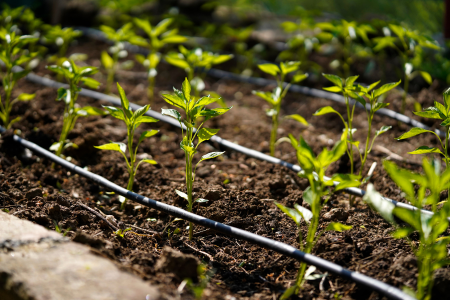When summer arrives, our gardens and lawns become our pride and joy, vibrant spaces where we can relax, entertain, and enjoy the beauty of nature. But keeping these green spaces lush and healthy during the hot months can be challenging. That is where an irrigation system comes into play. An efficient irrigation system conserves water and saves time and effort. Here is a brief guide to help you install and maintain a home irrigation system.
Planning Your Irrigation System
Before you start digging, you need a plan. Planning is crucial to ensure that your irrigation system is efficient and covers all areas of your garden or lawn.
Assess Your Landscape
Measure your garden or lawn area to determine how much piping and how many sprinklers or drip lines you will need. Note any slopes, as these will affect water pressure and distribution.
Check Water Pressure and Flow Rate
Knowing your water pressure and flow rate will help you choose the right irrigation system components. You can measure this with a pressure gauge and a bucket.
Select Your System
There are different types of irrigation systems to choose from:
- Sprinkler Systems: Ideal for lawns and larger areas.
- Drip Irrigation: Best for garden beds, shrubs, and individual plants.
- Soaker Hoses: Good for vegetable gardens and flower beds.
Gathering Materials
Once you have your plan, it is time to gather the materials. Here is what you will typically need:
- PVC pipes or polyethylene tubing
- Sprinkler heads or drip emitters
- Fittings and connectors
- Backflow preventer
- Pressure regulator
- Timer (optional but highly recommended)
Ensure you purchase high-quality materials to avoid frequent repairs and replacements.
Installation Steps
1. Lay Out Your System
Start by laying out your system on the ground according to your plan. This will give you a visual guide and ensure you have all the parts.
2. Dig Trenches
Dig trenches for your pipes. Trenches should be about 6-8 inches deep for sprinkler systems and 4-6 inches for drip systems. This depth protects the pipes from damage while allowing easy access for maintenance.
3. Install Pipes and Sprinklers
Lay the pipes in the trenches and connect them using fittings and connectors. Attach sprinkler heads or drip emitters to the pipes. Ensure that sprinkler heads are flush with the ground to avoid tripping hazards and to ensure even water distribution.
4. Connect to Water Supply
Connect your system to your main water supply using a backflow preventer to ensure that contaminated water does not flow back into your clean water supply. You may also need a pressure regulator to ensure your system operates within safe pressure limits.
5. Test Your System
Before covering the trenches, test your system to check for leaks and ensure all sprinklers or emitters are working correctly. Make any necessary adjustments.
6. Cover the Trenches
Once everything is working perfectly, cover the trenches with soil and compact it firmly to prevent any sagging.
Maintenance Tips
An irrigation system requires regular maintenance to keep it running efficiently. Here are some tips to help you maintain your system:
Regular Inspections
Check your system regularly for leaks, clogged emitters, and misaligned sprinkler heads. Fix any issues promptly to avoid water wastage.
Seasonal Adjustments
Adjust your watering schedule according to the season. In summer, your plants will need more water. In cooler months, you can reduce the watering frequency or duration.
Winterizing Your System
In regions with cold winters, it is essential to winterize your irrigation system to prevent damage from freezing. Drain all water from the system and insulate any exposed pipes.
Clean Filters
If your system has filters, clean them regularly to ensure optimal water flow.
Check Water Pressure
Over time, water pressure can change. Regularly check your system’s pressure and adjust your regulator if necessary.
Enjoying Your Lush Garden
With a well-planned and properly maintained irrigation system, you can enjoy a lush, green garden throughout the summer without the hassle of manual watering. It is an investment that pays off in the beauty and health of your outdoor space, as well as in water conservation. The key to a successful irrigation system is regular maintenance and seasonal adjustments. When you follow these steps, you can create a sustainable, efficient watering system that keeps your garden thriving all summer long.

